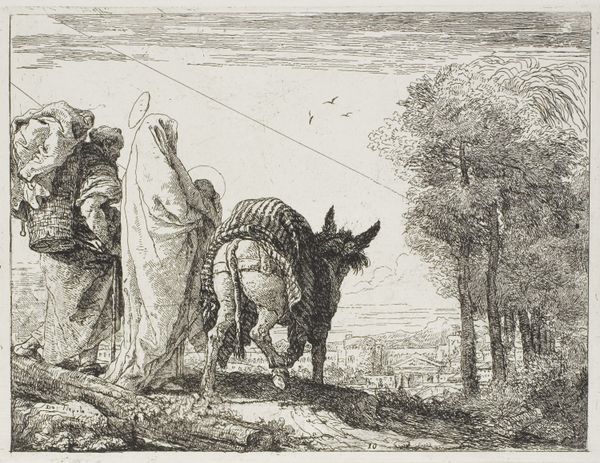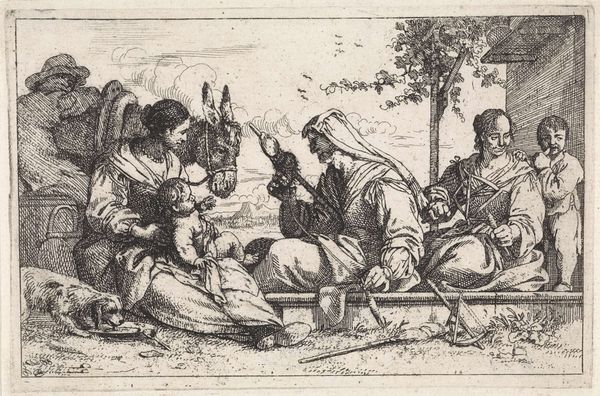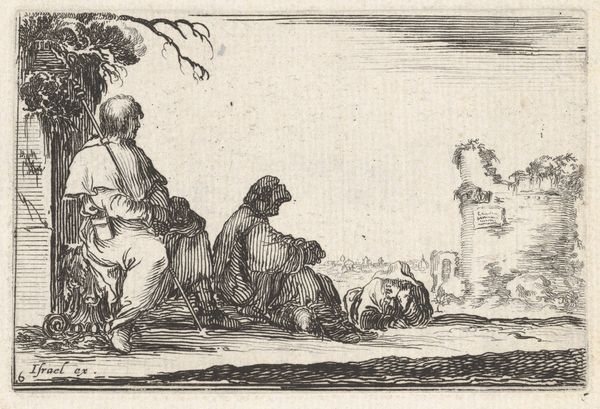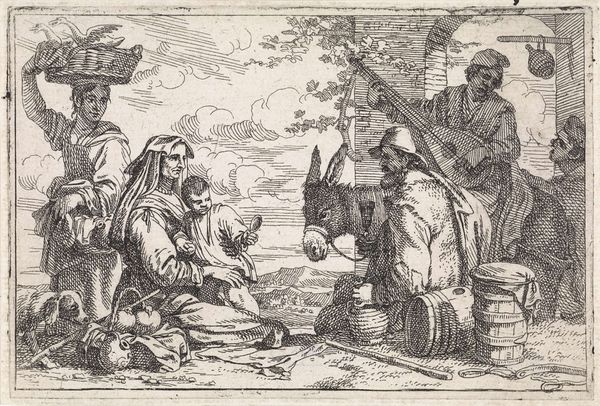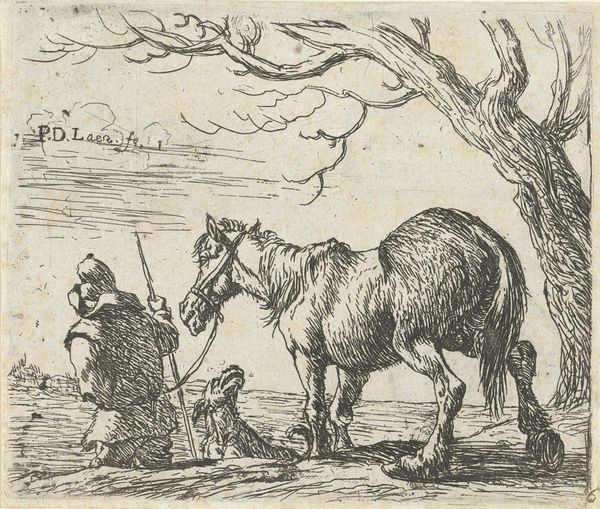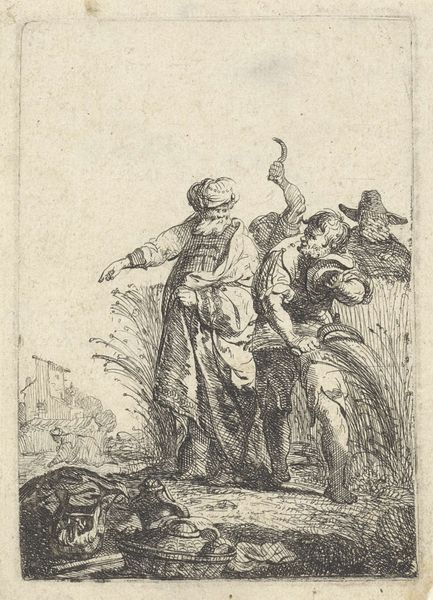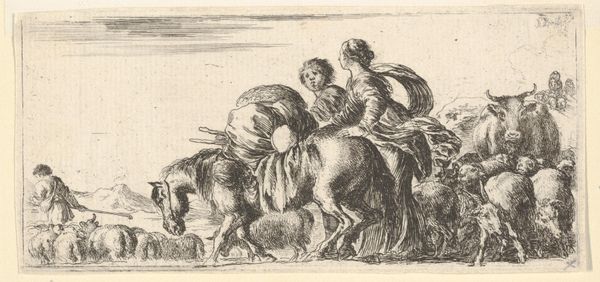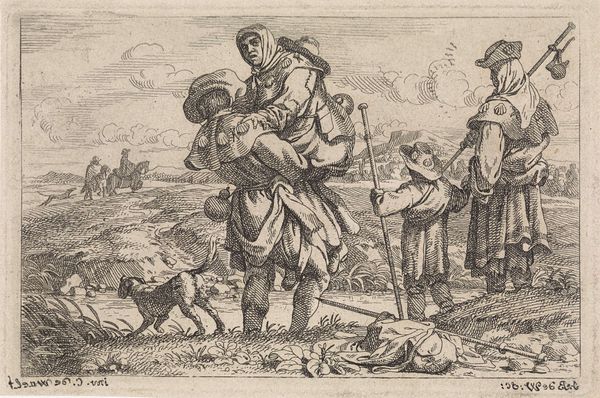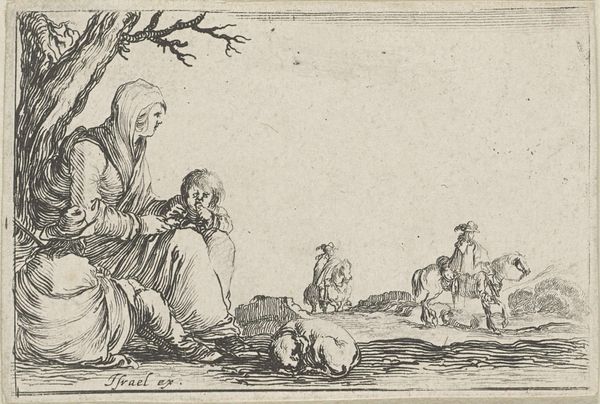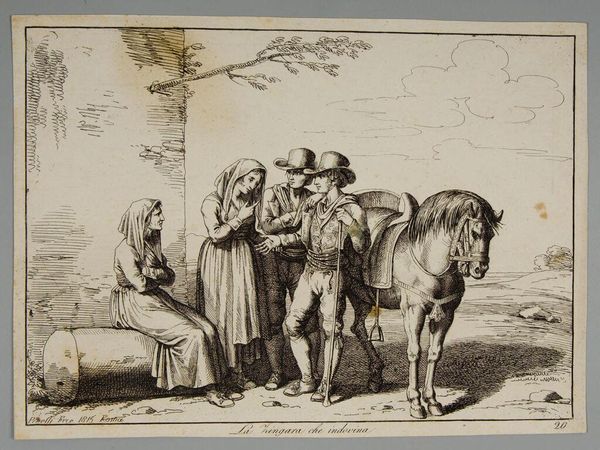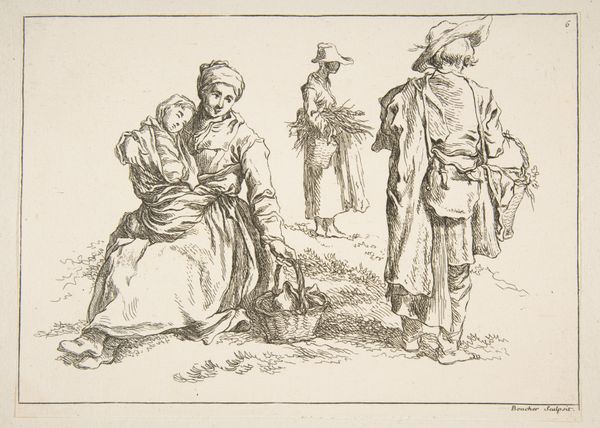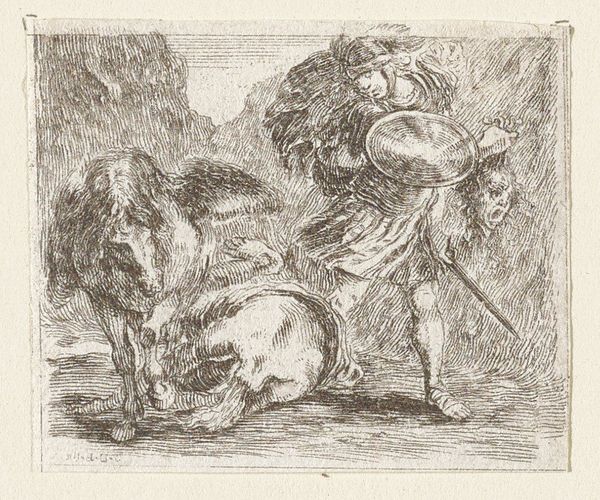
drawing, engraving
#
drawing
#
narrative-art
#
baroque
#
figuration
#
genre-painting
#
engraving
Dimensions: height 88 mm, width 130 mm
Copyright: Rijks Museum: Open Domain
Editor: This is "Woman Riding a Donkey" by Jan Baptist de Wael, created sometime between 1642 and 1669. It’s an engraving. I find it so interesting – there’s something almost comical about the expressions on the animals and the figures in this work. What stands out to you when you look at it? Curator: The scene is certainly engaging on multiple levels. As an historian, I am drawn to the depiction of everyday life in Baroque art and how such scenes were consumed. Consider the print's circulation during that period. How did such images influence societal views on gender, class, and even our relationship with animals? Was this just an entertaining genre scene, or did it carry some political commentary for its contemporary audience? Editor: So, do you think there’s potentially a deeper meaning to the work beyond just being a representation of daily life? Like, are there elements suggesting a particular message? Curator: Absolutely. The contrast in attire, the postures of the riders and the donkey itself – especially considering how the donkey’s open mouth resembles an absurd theatrical mask – could speak volumes about the social hierarchies. The dog in the right-hand side and background landscape play supporting roles in creating the artwork's narrative setting. These are genre scenes created for a consuming public, what meaning do *you* suppose contemporary audiences gave to these popular artworks? Editor: I never would have thought of that! Seeing it from a historical perspective really adds another layer of interpretation. Curator: Exactly! The real joy of art is recognizing how the echoes of the past resonate and reflect within contemporary society. It helps us reflect upon ourselves. Editor: This has really opened my eyes! I’ll definitely be considering the socio-political context more closely when analyzing art from now on. Thanks!
Comments
No comments
Be the first to comment and join the conversation on the ultimate creative platform.

